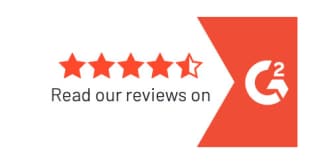If there’s one thing advisors don’t need in Q4, it’s unexpected Required Minimum Distribution (RMD) drama.
Don’t worry. We recently hosted a webinar covering everything you need to know about RMDs from the regulations to how they impact your clients. We have the highlights below, but be sure to watch the full webinar to be as prepared and informed as possible. Click here to access.
The Rules
The basics seem simple. Participants must begin RMDs at age 73. However, the timing can still catch people off guard.
The first RMD can be delayed until April 1 of the year after the participant turns 73. Every RMD after must be taken by December 31 each year.
Advisors help clients understand the domino effect of delaying that first distribution. Waiting until April 1 usually means two RMDs in the same tax year, which can create a much higher than expected tax bill.
Plan terms matter as well. Some 401(k)s allow the still-working exception for non–5% owners who remain employed past 73. But because it’s not automatic, it must be confirmed with the plan.
Mistakes happen, especially with multi-plan clients, lost accounts, or inherited accounts. A missed or insufficient RMD triggers a 25% penalty, which can drop to 10% if corrected in time. Advisors should also be ready to help clients with Form 5329, documentation, and conversations with custodians when issues arise.
How to Calculate RMDs
The calculation itself is straightforward: Prior-year 12/31 balance ÷ IRS life expectancy divisor.
But accuracy depends on much more than plugging in numbers. Advisors should:
- Confirm the correct year-end balance, including any rollovers or loan adjustments.
- Use the correct IRS life expectancy table for the participant.
- Distribute the RMD before any rollover or transfer.
- Encourage clients to schedule distributions earlier in the year to avoid market swings and year-end processing bottlenecks.
Where 401(k)s Differ From IRAs
One of the most common misconceptions is the idea that 401(k)s follow the same aggregation rules as IRAs. They don’t.
For starters, you cannot aggregate RMDs across 401(k) plans. Each plan must also satisfy its own requirement. Remember that plan terms matter, especially when determining still-working eligibility. And starting in 2024, Roth 401(k) owners have no lifetime RMDs, but beneficiaries still do.
These differences make it essential for advisors to check the specific provisions of each employer plan, not just rely on IRA rules.
Inherited 401(k)s
Post-death rules are where things get especially complicated and where planning ahead makes a significant difference.
Under SECURE Act 2.0, most non-spouse beneficiaries must empty the account within 10 years. If the participant had already begun RMDs, annual “at least as rapidly” distributions may also apply during the 10-year period. Spouses have more flexibility, including the ability to roll over funds or elect to be treated as the employee for RMD purposes.
Because IRS guidance continues to evolve, advisors should always verify the most current rules before offering recommendations.
A Reliable Annual Workflow
To reduce risk and keep clients on track, advisors benefit from a repeatable, documented process. A strong RMD workflow includes:
- Identifying every plan subject to RMDs
- Verifying employment status and still-working exceptions
- Confirming all 12/31 balances
- Applying the correct divisors
- Scheduling distributions early
- Reviewing tax withholding
- Documenting calculations, approvals, and confirmations
A proactive approach not only minimizes errors; it builds client trust and smooths year-end operations.
With the right structure in place, RMDs become predictable instead of stressful. The key is understanding how 401(k) rules differ from IRAs, staying ahead of timing challenges, and helping clients avoid unnecessary penalties and surprisecs.
If you want a deeper dive, including illustrated examples, calculation walkthroughs, and advisor Q&A, you can watch the full session anytime. Access here: http://401go-9116296.hs-sites.com/required-minimum-distributions-webinar-registration



